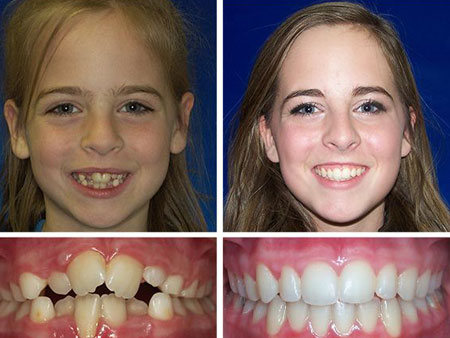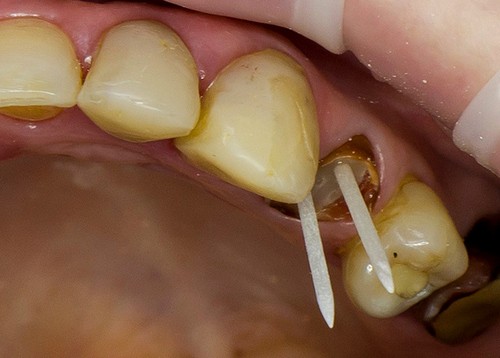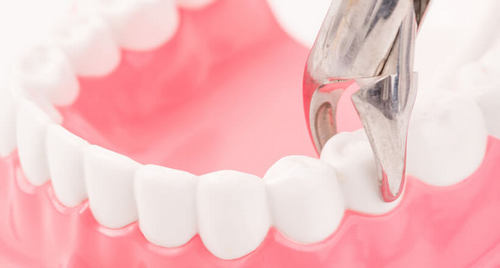Few people know that the correct, smooth shape of the dentition depends not only on the aesthetics of face and smile of a child, but his social adaptation, and even health. Chronic fatigue or spasms in the neck and back, headaches and even indigestion – the cause of all this can become uneven teeth.
Fortunately, modern dentistry has successfully helped to solve this problem. How we find out in our article.
Smooth shape of the dentition in a child depends on how is the bite of a baby, and the condition of individual teeth. Everyone knows that a proper bite is when the lower jaw is closed the top. Meanwhile, for infants is characteristic of the so-called progeny: at this age, the lower jaw of them, on the contrary, slightly pushed forward.
Physiologically this is because the baby is so comfortable during feeding to grab the chest. After some time the lower jaw back into place, and begins to form occlusion: six years in – milk, then to eleven interchangeable, and finally to fifteen years – permanent.
The correctness of the latter is affected by the following factors:
- Genetics. Uneven the teeth can be because of hereditary reasons. If parents have observed a wide gap between front teeth, or malocclusion, children also it can be transmitted.
- Congenital pathology. Uneven the teeth can be caused migrated during fetal development infections, injuries during pregnancy and birth. Insufficient amount of amniotic fluid also can cause further abnormal jaw development of the baby.
- An improper diet. Jaw child must receive the required amount of load during chewing. For this, the diet must include natural solid foods for example fruits and raw vegetables. Otherwise, the risk of malocclusion increases.
- Chronic diseases of a nasopharynx. Nasal breathing with such pathologies is hampered, as a result, the baby begins to breathe through the mouth. Is broken natural teeth sminaemosti, however, suffers from occlusion.
- Bad habits. Have your child chew on both sides of jaws, not biting his nails, did not take in my mouth. Of the above may adversely affect the occlusion already at a later age.

THE PROBLEM OF UNEVEN MILK TEETH
The first teeth a baby in the growth process, as a rule, are straight and close to each other. With the overall growth of the body they then gradually diverge. Formed at the same intervals in the rule should be uniform. If not, you should contact your dentist, as we have before us a signal of asymmetric jaw development. Take care of diagnosis and treatment in time to prevent worsening of the pathology in the future, at the stage of permanent dentition.
JAGGED PERMANENT TEETH IN A CHILD
Alas, even a perfect bite of milk does not guarantee that the permanent teeth will then inherit from their predecessors such beauty. Most of the permanent teeth on the stage of eruption is not smooth. Normally, they then take a more correct position, as if “turning”, as with the growth of the child becomes more space in the jaw for the new teeth. But often the jaw late in growth, and then the teeth become “closely”, they are literally pushing each other and begin to grow crooked. It happens at too early tooth.
THE JAGGED TEETH OF THE CHILD: HOW TO FIX?
To prevent the process to improper growth of the teeth of the child will allow special exercises for oral-facial muscles (called chemotherapy). It is also important to ensure that the baby was breathing nasal breathing. However, if the curve has already been observed, it can only be cured with the help of orthodontic appliances.
BRACES
Braces set patients over twelve years. Structures made of ceramic, metal and other materials and are non-removable.
The principle of operation is that braces are fixed to the teeth and constantly have moderate pressure, over time, eliminating too large a spacing and aligning the teeth.
Treatment with braces to achieve the effect, as a rule, from six months to two years of wearing design.
ALIGNERS-ALIGNERS
This unit is similar to the effect of braces, but structurally more modern. Aligners apply 16-18 years. Externally it is almost invisible, a translucent tray. Are these designs for day wear, removed only during brushing and eating. One pair of aligners is from two weeks to a month, after which it must be replaced. The term bite correction is the same as in the case of braces.
LIP BUMPERS, AND REMOVABLE PLATES AND TRAINERS
These orthodontic appliances are used to treat patients aged 4-6 years. Designs are fixed either overnight or for a few hours a day. This is an especially effective tool on the stage of growth of the jaws.
It should be emphasized that to consolidate the results after treatment by one method or another, experts advise the use of retainers.
PREVENTION RECOMMENDATIONS FOR PARENTS
- It is necessary to wean your baby from pacifiers (roughly 8-9 months, when starting to develop chewing reflex). Option – replacement nipples vestibular plates.
- Make sure that the child is not biting his nails. Autocyte from other bad habits – for example, thumb-sucking.
- Include in the diet of the child, sufficient amount of solid foods – carrots, cucumbers, apples, pears, etc.
- Carefully follow the oral hygiene of the child, especially at the stage of growth of milk teeth. A pediatric dentist need to visit not less than twice a year. Avoid premature loss of baby teeth.



